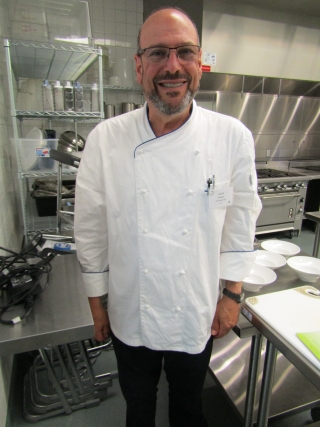
Virtually Teaching Student-led International Holiday Foods
04 December 2020Students lead holiday cooking lessons based on their own culture or one assigned by the instructor.
By Adam Weiner, JD, CFSE
One time I spouted out in class, “Sometimes the easiest way is just the easiest way.” I am going to show you the easy way to teach about holiday events in different cultures.
I have long promoted shifting classroom teaching to the students, either individually or in groups, as much as possible. When students teach all or part of a class, they first learn the material themselves. They develop their communication skills and work toward reducing shyness. They practice their public speaking. They also learn culinary management skills of planning, ordering ahead of time, time management, supervising others, etc. And, most importantly, they develop a new respect for how hard it is to teach - and more importantly, how hard it is to teach virtually. Students become much more attentive after a student-teacher stint.
I frequently handed over my class to a student or students during the holiday season for them to teach others about the holiday foods of their culture. (Note, many students have multiple cultures in their families, and you should decide if they should present multi-cultures or to choose one.) You can make the assignment as easy or as complicated as your class time allows. If you don’t have much time, have the students teach a cookie recipe from their culture. If you have more time, you can have the students teach a holiday dessert other than cookies, a side dish, soup or entrée to each other.
You can approach this several different ways. If you are physically together, teamwork is preferred. If they are learning virtually from home, then you need to make some adjustments.
- Have a student (or team of students) teach the whole class. For example, one day your student teacher(s) teach everyone how to make Mexican holiday cookies and the next day a different person or team teaches Swedish cookies.
- Have a student lead a small team (between two to four students) in how to make cookies from her or his culture. (This could be done in breakout rooms if you are teaching virtually.) Each team presents their work to the class at the end of the period. The next class day, a different person or team shows that same group a different cookie from a different culture, which is likewise presented at the end of the class.
- Have the student(s) make up a lecture or demonstration on a holiday tradition not from their family, but from another culture or heritage that either you or the student(s) select. This requires them to learn recipes, techniques, and cooking styles different from what they might already know.
You can make this into a flipped classroom exercise if you don’t have much cultural diversity in your class. Assign a student (or team of students) a particular culture and include researching the culture, ordering the product (if instructing in-person), cooking the cookie or dish, and presenting a culture talk to the class. Please see Teaching International Cuisines in 50 Minutes for other ideas about how to teach international dishes.
There are a few things you need to monitor during this lesson:
- Anytime you have a student teaching, you lose a bit of control over what is being taught and said. Watch for inappropriate or disparaging comments. These can happen from the student who is teaching, but more likely from another student. Comments can range from: “My culture is the best,” to “That sounds so stupid,” to “Yuck, I don’t want to eat that.” Cultural comments may possibly get worse. You know your class and who the troublemakers are or those students that will say something without thinking about what it means to others. You must control your class even when a student or group of students might be teaching in class or virtually.
- Many school districts have rules on teaching about holiday events. You need to make sure your assignments don’t violate these rules.
- There are schools that don’t allow the preparation and/or eating of sweets on campus for public policy reasons. You need to make sure your holiday assignments don’t violate these rules (even if the dishes are made at home). If this is an issue at your school, one possible idea would be to have each group or each person teaching prepare a vegetable side dish from their culture.
Have a wonderful holiday break. See you next year.
Adam Weiner, JD, CFSE, has been a culinary instructor in the San Francisco Bay Area for more than 16 years.
